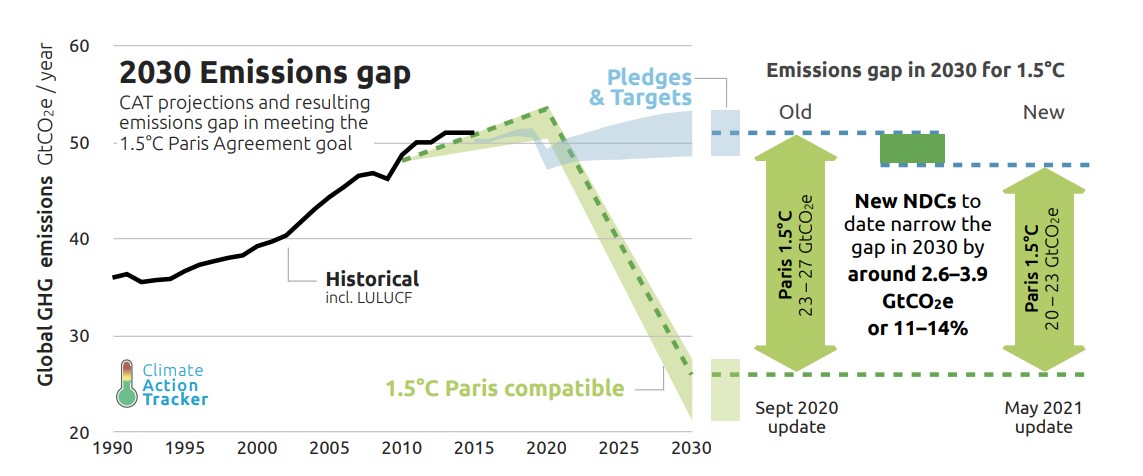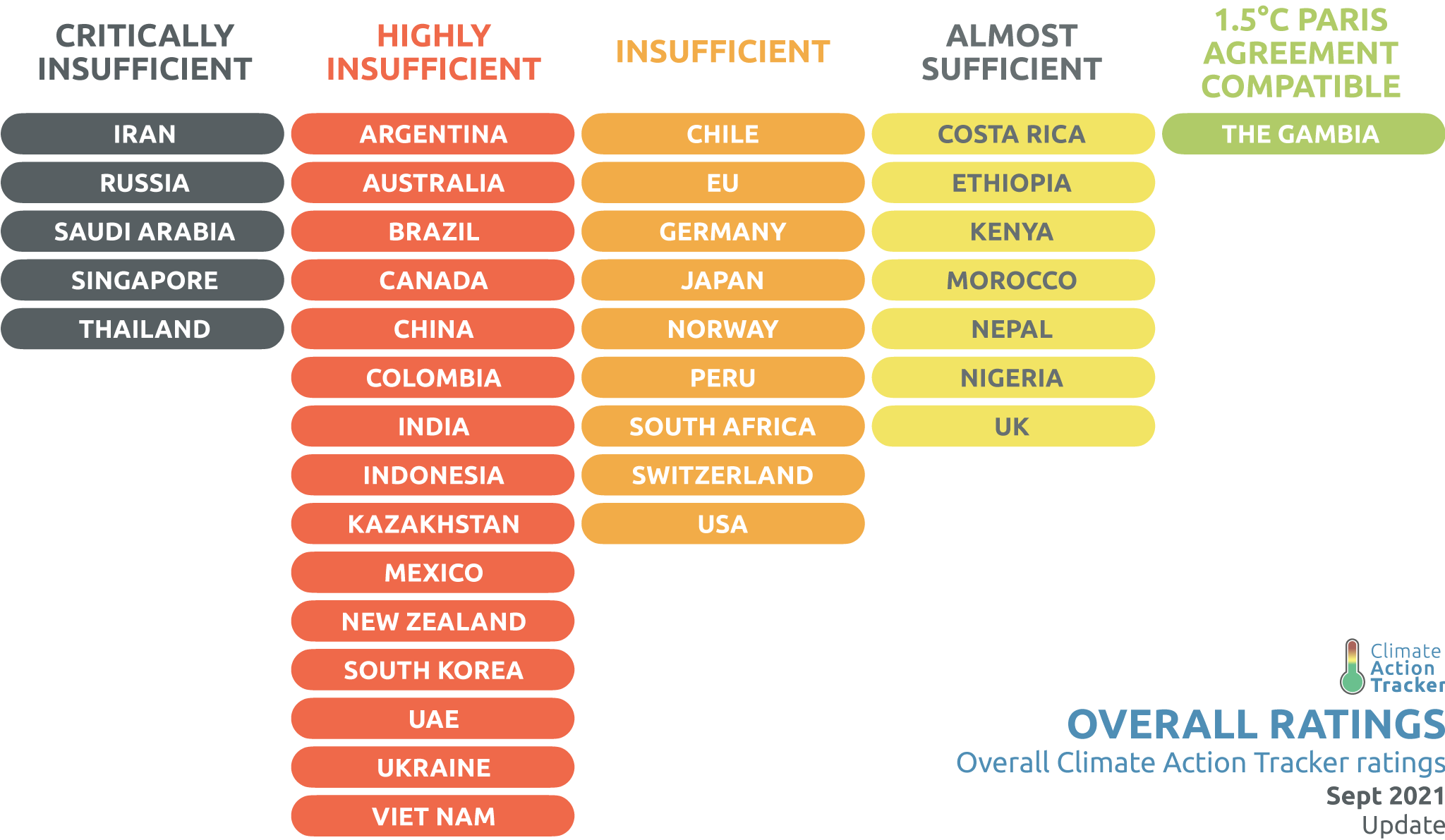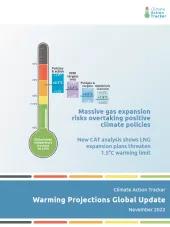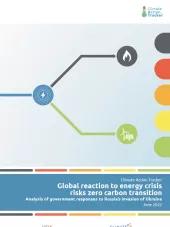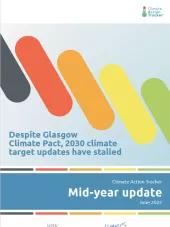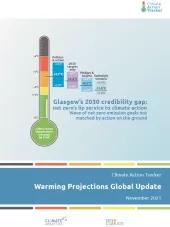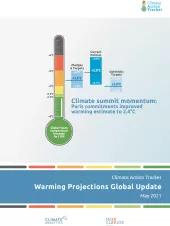In these briefings, the Climate Action Tracker (CAT) introduces its new rating methodology, which now rates more elements than before – mitigation targets in Nationally Determined Contributions (NDCs), policies and action, and climate finance. We’ve also added a methodology for assessing net zero targets. These briefings provides an overview of the development in climate action over the last year and illustrates the new CAT assessment of the countries we analyse, based on our updated method.
Summary
Code red: The new IPCC report on climate science has reinforced the absolute urgency of closing the 2030 emissions gap if there is to be any chance of limiting warming to 1.5˚C. While people are suffering from ever more severe and frequent impacts of climate change around the globe, and the IPCC has yet again clearly demonstrated the feasibility and urgency of climate change mitigation, action to reduce greenhouse gas emissions continues to lag behind what is needed – in practically all countries and sectors. International climate finance to support action in developing countries is falling short. Even countries with strong targets are mostly not on track to meet them, while more have failed to bring forward stronger commitments for 2030.
Gap narrowed only slowly: NDC updates submitted so far in 2020–2021 have narrowed the gap to what is needed for 1.5°C only by up to around 4 GtCO2e, or up to 15%. Of particular concern are governments - Australia, Brazil, Indonesia Mexico, New Zealand, Russia, Singapore, Switzerland and Viet Nam - that have failed to lift ambition at all – they have submitted the same or even less ambitious 2030 targets than they had put forward in 2015. These countries need to rethink their choice. There are still over 70 countries that have yet to submit an updated target.
The new comprehensive CAT rating system reveals a few lone frontrunners, but most government targets and actions remain highly or critically insufficient. For domestic action, only one developed country has a domestic target that is rated under the CAT’s new rating system as “1.5˚C compatible” (UK), and some are close (EU, Germany, Norway). Domestic targets are, however, only one dimension of the actions needed for Paris compatibility. None of these governments have put forward sufficient international climate finance - which is absolutely essential for ambitious action in those developing countries needing support to reduce emissions - nor do they have sufficient policies in place. As a consequence, the EU, Germany and Norway are rated as “Insufficient” in the new overall CAT rating, whilst the UK is slightly better rated as “Almost sufficient”. Only one country – a developing country – The Gambia scored an overall 1.5 degree compatibility in the new CAT rating system launched with this update.
More targets and actions are needed: Almost all developed countries need to further strengthen their targets to reduce emissions as fast as possible, to implement national policies to meet them, and to support more developing countries to make the transition. Developing countries also need to update their targets and policies, but also show a pathway for how they could also reduce their emissions as fast as possible if they were supported financially - and to clearly indicate the support they need.
Positive developments need to urgently be scaled up: Some countries have significantly updated their targets and implemented new policies (USA, EU, Germany). Such positive movements need to urgently be followed by all other countries. Governments need to take advantage of the drop in renewable energy and storage costs and ramp up their installation. They must cancel their coal construction plans, and drop plans and funding for gas pipelines and new terminals.
The most important target date is 2030, by which time global emissions must be cut by 50%, and governments are nowhere near this. We estimate that with current actions global emissions will be at roughly today’s level in 2030, we would be emitting twice as much as required for the 1.5°C limit.
The wave of national mid-century net zero targets give reasons for hope, but will fail without sufficient 2030 reductions. There needs to be alignment between 2030 targets and net zero goals for the latter to be believable. Our assessment shows that most net zero targets are formulated vaguely and do not yet conform with good practice. Robust short-term targets and pathways towards achieving them are required to fully realise their ambition. If fully implemented, the net zero targets on the table, in combination with the 2030 goals on the table so far, could reduce global temperature increase to around 2.0°C in the CAT optimistic case, based on our briefing from May 2021.
For country-specific analysis, please download the full briefing here.
For more in-depth explanation of the new rating system, please download the full explanation here.

